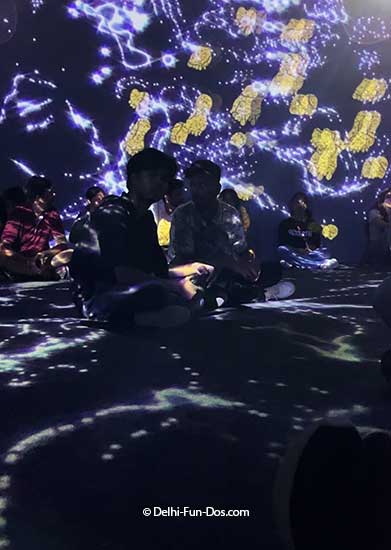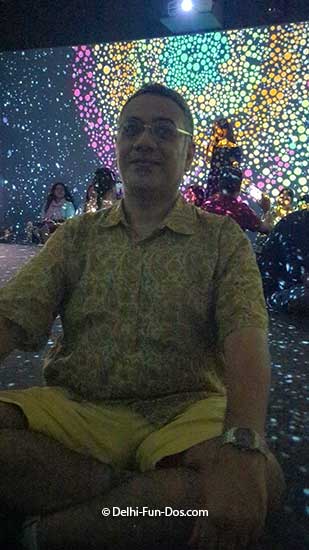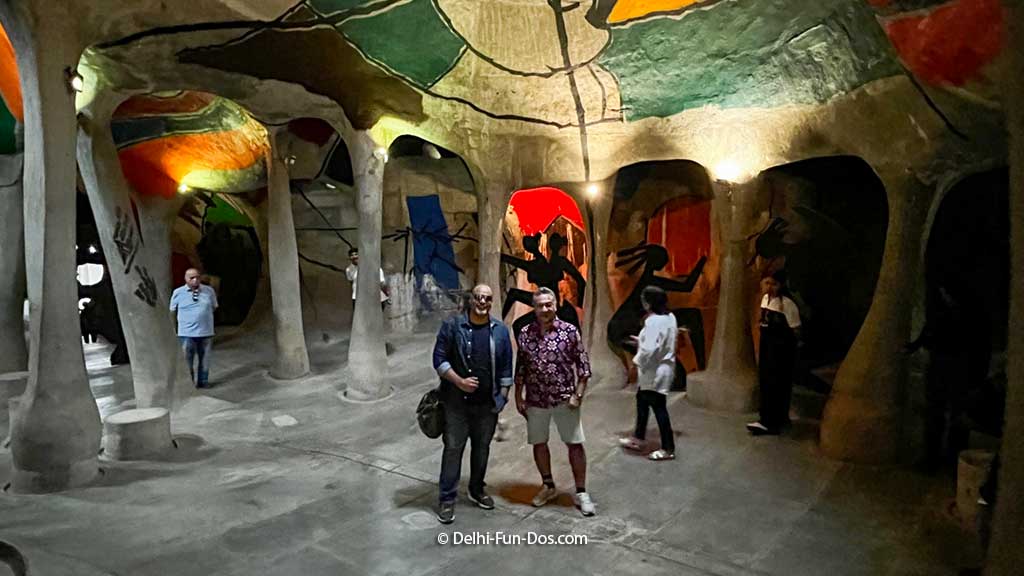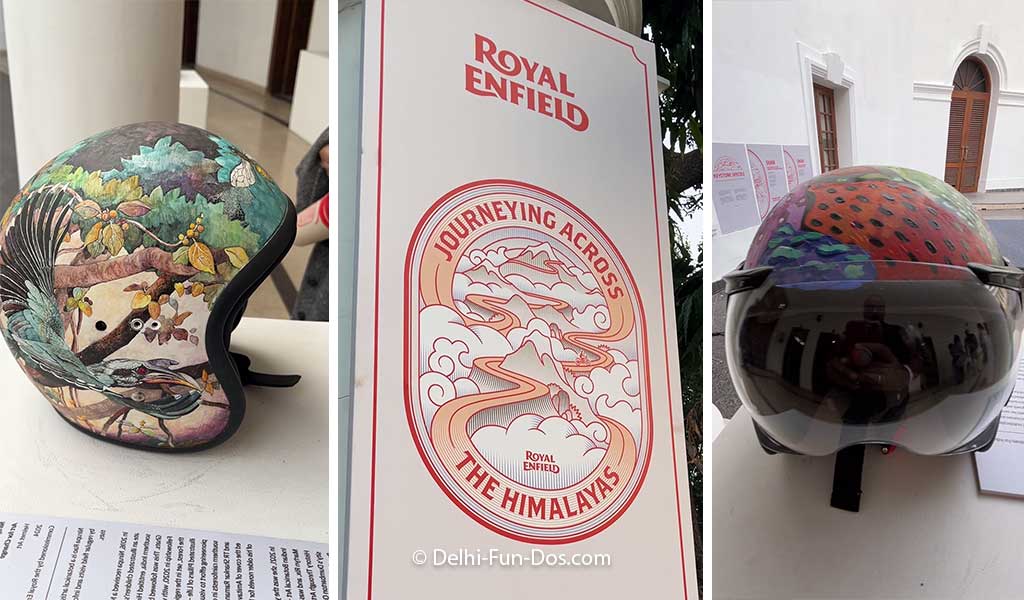Imagine watching an exhibition lying down on the floor in a dark room with an audio-visual presentation running on the ceiling. And in another room, it was raining lights! A recent exhibition at the Kiran Nadar Museum of Art in Saket offered this and much more.
Titled ‘Walking Through a Songline’, this exhibition was organised by The Australian High Commission in India in collaboration with KNMA. This dramatic digital experience was based on a component of the National Museum of Australia’s internationally acclaimed exhibition, Songlines: Tracking the Seven Sisters.
Contents
Tracking the Seven Sisters
Tracking the Seven Sisters, which features works by more than 100 artists, is an Aboriginal-led exhibition developed in 2017. It takes visitors on a journey along the epic Seven Sisters Dreaming tracks through art, indigenous voices, innovative multimedia, and other immersive displays. Visitors make their way through stunning projections that depict a songline in an artistic and striking manner. This deeply engaging experience successfully juxtaposes ancient knowledge with new technology. But why was it called ‘Walking through a Songline’?

The Concept of Songlines
In Australian Aboriginal culture, a ‘Songline’ describes the features and directions of travel. Such details were included in a song that had to be sung and memorised for the traveller to know the route to their destination. It was akin to a lyrical GPS where your map not only leads you to the destination but also directs you about restaurants, restrooms, fuel pumps, and other amenities along the route.

A songline would acquaint the traveller not only with the path but also with the dos and don’ts of a new land, what to eat and what to avoid, and the practices to follow. Like most traditional cultures, ancestors would be invoked during the journey, and their experiences would guide the traveller. The songlines were a lively way of cultural exchange among various communities, fostering a sense of fraternity and breaking boundaries of time, space, and culture through music.

It was a dynamic song, similar to what Gurudev Rabindranath Tagore wrote as ‘Jatra Pather Ananda Gaan’ – the happy song of the roads.
Songlines in India
India has a rich culture of travelling singers, wandering minstrels, ballad singers, and nomadic folk musicians. They moved from one village to another, singing verses in ode to deities, ancestors, nature, lifestyle, and social practices. Much like the Australian songlines, our folk culture connected people across distant lands.

With onslaught of history and time, many songlines are lost, the routes are blurred. Similar to what we see in India as well. The culture of wandering musicians is practically history here. But the exhibition serves as another overwhelming instance of how all mankind is connected through common cultural practices.
A Stunning Display of Creativity
What a stunning display of creativity this exhibition was! We look forward to more such exhibitions. Currently, the exhibition is being presented in Australia and internationally. As we write, it is ongoing at the Science Gallery Bengaluru, India, from 18th July to 18th August 2024. If you are in that part of India, it is indeed worth a visit. Walking Through a Songline – The exhibition is travelling to Kolkata after that.

Walking through a Songline is more than just an exhibition; it’s a journey through the rich tapestry of Australian Indigenous culture, brought to life with innovative multimedia and the powerful tradition of songlines. This unique mix of ancient and modern offers a deeply engaging experience that goes beyond cultural and temporal boundaries. In other words, it could be representative of any traditional culture anywhere in the world. So, if you have the chance to see this exhibition, don’t miss it. It’s an experience that resonates with the universal human spirit and our shared cultural heritage.




0 Comments